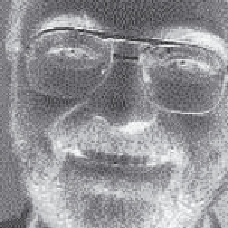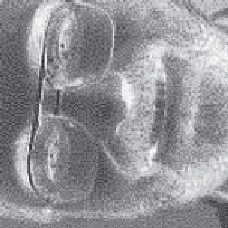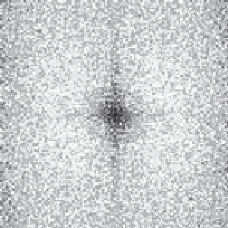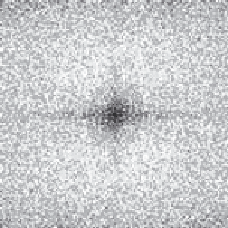Image Processing Reference
In-Depth Information
(a) Face image
(b) Rotated face
(c) Transform of face image
(d) Transform of rotated face
Figure 2.19
Illustrating rotation
)] =
1
Fp t
[
(
λ
P
(2.32)
λ
λ
This is illustrated in Figure
2.20
where the texture image (of a chain-link fence), Figure
2.20
(a), is reduced in scale, Figure
2.20
(b), thereby increasing the spatial frequency. The
DFT of the original texture image is shown in Figure
2.20
(c) which reveals that the large
spatial frequencies in the original image are arranged in a star-like pattern. As a consequence
of scaling the original image, the spectrum will spread from the origin consistent with an
increase in spatial frequency, as shown in Figure
2.20
(d). This retains the star-like pattern,
but with points at a greater distance from the origin.
The implications of this property are that if we reduce the scale of an image, say by
imaging at a greater distance, then we will alter the frequency components. The relationship
is linear: the amount of reduction, say the proximity of the camera to the target, is directly
proportional to the scaling in the frequency domain.
2.6.4
Superposition (linearity)
The
principle of superposition
is very important in systems analysis. Essentially, it states
that a system is linear if its response to two combined signals equals the sum of the
responses to the individual signals. Given an output
O
which is a function of two inputs
I
1





















